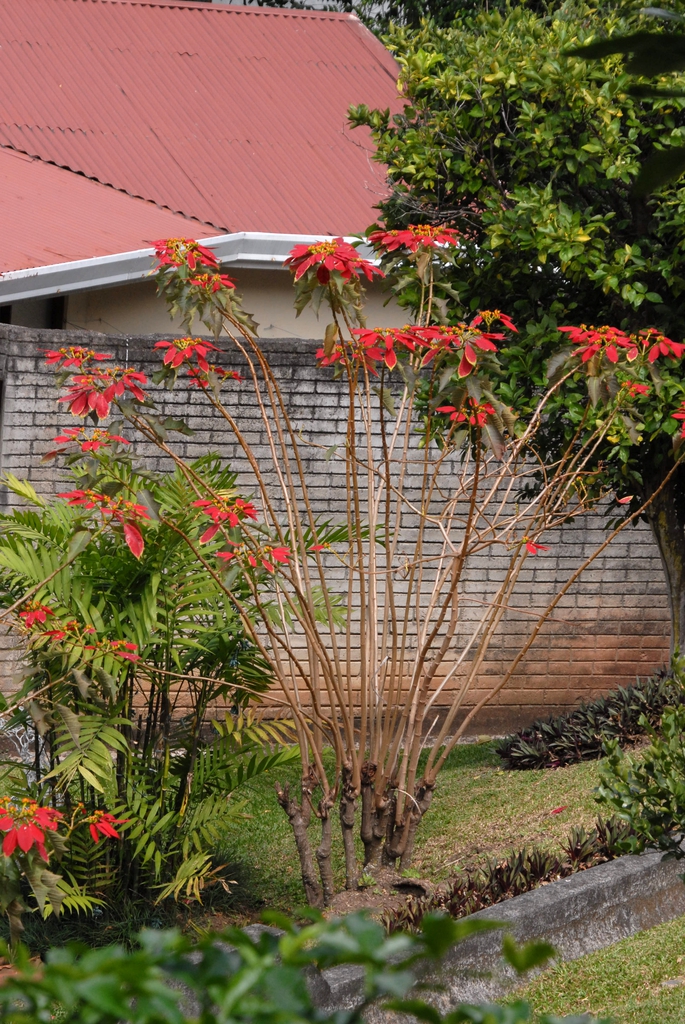How to Care for Poinsettias: A Guide to Keeping Your Holiday Plant Healthy
go.ncsu.edu/readext?1043399
en Español / em Português
El inglés es el idioma de control de esta página. En la medida en que haya algún conflicto entre la traducción al inglés y la traducción, el inglés prevalece.
Al hacer clic en el enlace de traducción se activa un servicio de traducción gratuito para convertir la página al español. Al igual que con cualquier traducción por Internet, la conversión no es sensible al contexto y puede que no traduzca el texto en su significado original. NC State Extension no garantiza la exactitud del texto traducido. Por favor, tenga en cuenta que algunas aplicaciones y/o servicios pueden no funcionar como se espera cuando se traducen.
Português
Inglês é o idioma de controle desta página. Na medida que haja algum conflito entre o texto original em Inglês e a tradução, o Inglês prevalece.
Ao clicar no link de tradução, um serviço gratuito de tradução será ativado para converter a página para o Português. Como em qualquer tradução pela internet, a conversão não é sensivel ao contexto e pode não ocorrer a tradução para o significado orginal. O serviço de Extensão da Carolina do Norte (NC State Extension) não garante a exatidão do texto traduzido. Por favor, observe que algumas funções ou serviços podem não funcionar como esperado após a tradução.
English
English is the controlling language of this page. To the extent there is any conflict between the English text and the translation, English controls.
Clicking on the translation link activates a free translation service to convert the page to Spanish. As with any Internet translation, the conversion is not context-sensitive and may not translate the text to its original meaning. NC State Extension does not guarantee the accuracy of the translated text. Please note that some applications and/or services may not function as expected when translated.
Collapse ▲In its natural environment, the poinsettia can be used as a landscaping plant around the home and yard. (Source: NC Extension Gardener Plant Toolbox/Jim Robbins)
Poinsettias are most recognizable with the holiday season, their vibrant red, white, pink, or speckled bracts (often mistaken for flowers) adding a festive touch to homes and offices. Native to Mexico, these plants, scientifically known as Euphorbia pulcherrima, thrive during winter with proper care. Here’s how to keep your poinsettias healthy and vibrant throughout the holiday season and beyond.
When selecting a poinsettia, look for brightly colored bracts free of blemishes, dark green foliage extending down the stems, a full, balanced shape, and tight, yellow buds in the center of the bracts, indicating a fresh plant. Avoid plants with wilted, drooping, or yellowing leaves.
Poinsettias thrive in bright, indirect light. Place them near a sunny window but away from direct sunlight, which can scorch the leaves. Keep the room between 65–70°F during the day and slightly cooler at night. Protect the plant from hot or cold drafts, such as from heaters, vents, or doors, as they can stress the plant and cause leaf drop.
Watering is crucial for poinsettias, as both overwatering and underwatering can harm them. Water the plant thoroughly when the top inch of soil feels dry to the touch, ensure proper drainage by removing any decorative foil around the pot or poking holes in it to prevent water from pooling, and discard excess water from the saucer to avoid root rot. Poinsettias prefer moderate humidity. If your home is dry, consider placing a tray of water with pebbles near the plant or using a humidifier.
Fertilize the plant only after the holiday season when it’s actively growing, typically starting in late winter or early spring. Use a balanced, water-soluble fertilizer every two to four weeks.
With proper care, poinsettias can be kept year-round. January through March, keep watering when the soil is dry, and continue providing bright light. Around April, cut back stems to about 4–6 inches to promote new growth. Repot if needed. Move the plant outdoors once the weather is consistently warm, usually late May (after the last frost) through September. Keep it in partial shade and maintain regular watering and fertilizing. In October, poinsettias need 12–14 hours of darkness each night to trigger blooming. Place the plant in a dark closet or cover it from evening until morning for about 6–8 weeks to help it bring out its bright colors again.
Common problems of poinsettias include leaf drop often caused by sudden temperature changes, drafts, or improper watering and yellowing leaves, which indicates overwatering or insufficient light. Also, be sure to watch for common pests like whiteflies or spider mites and treat with insecticidal soap if needed.
You may also need to repot your plant as it grows. Remember to only go up on pot size each time it needs to be repotted and use a high-quality potting soil. With these simple care tips, your poinsettias will remain a cheerful centerpiece throughout the holiday season and beyond. Enjoy the vibrant beauty and festive charm they bring to your space!




